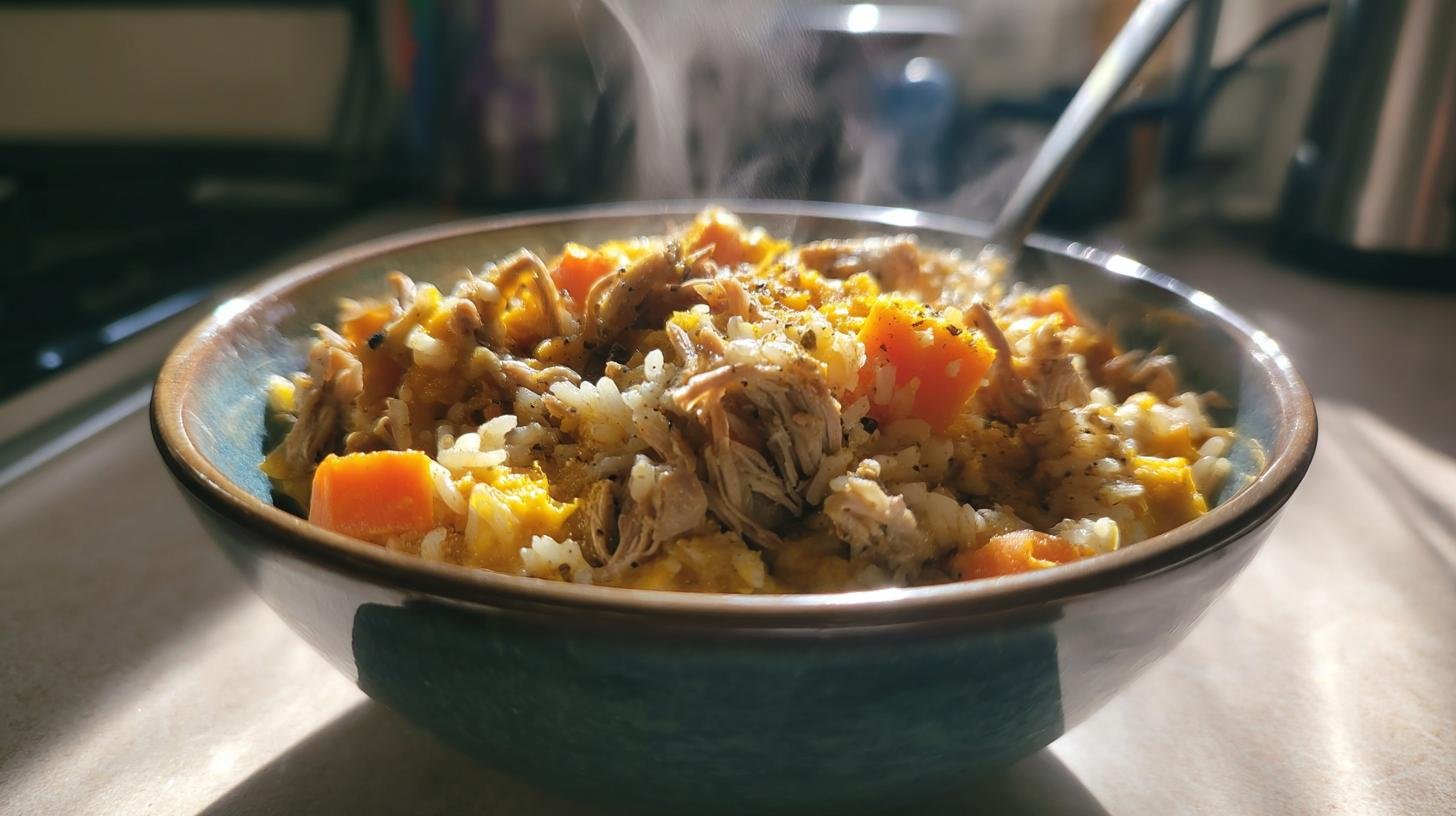Let me tell you about the day my golden retriever pup, Biscuit, turned his nose up at store-bought kibble. That’s when I realized – growing puppies need real fuel, not just filler! After three frantic calls to our vet and a crash course in canine nutrition, I discovered the power of a proper high protein puppy diet. Those early days taught me what every puppy parent needs to know: protein isn’t just for bodybuilders. Our furry babies need quality fuel for those zoomies, growing bones, and those adorable floppy ears that seem to triple in size overnight!
When Biscuit started looking more like a furry potato than a puppy, our vet dropped the truth bomb: “Their food bowl should be 25% protein minimum.” Suddenly, my kitchen became a puppy meal prep lab. The real magic happened when I swapped processed pellets for shredded chicken and farm-fresh eggs. Now I want to share the recipe that turned Biscuit from a picky eater into the healthiest pup at the dog park – but always check with your vet first! Your fur baby’s needs might surprise you.
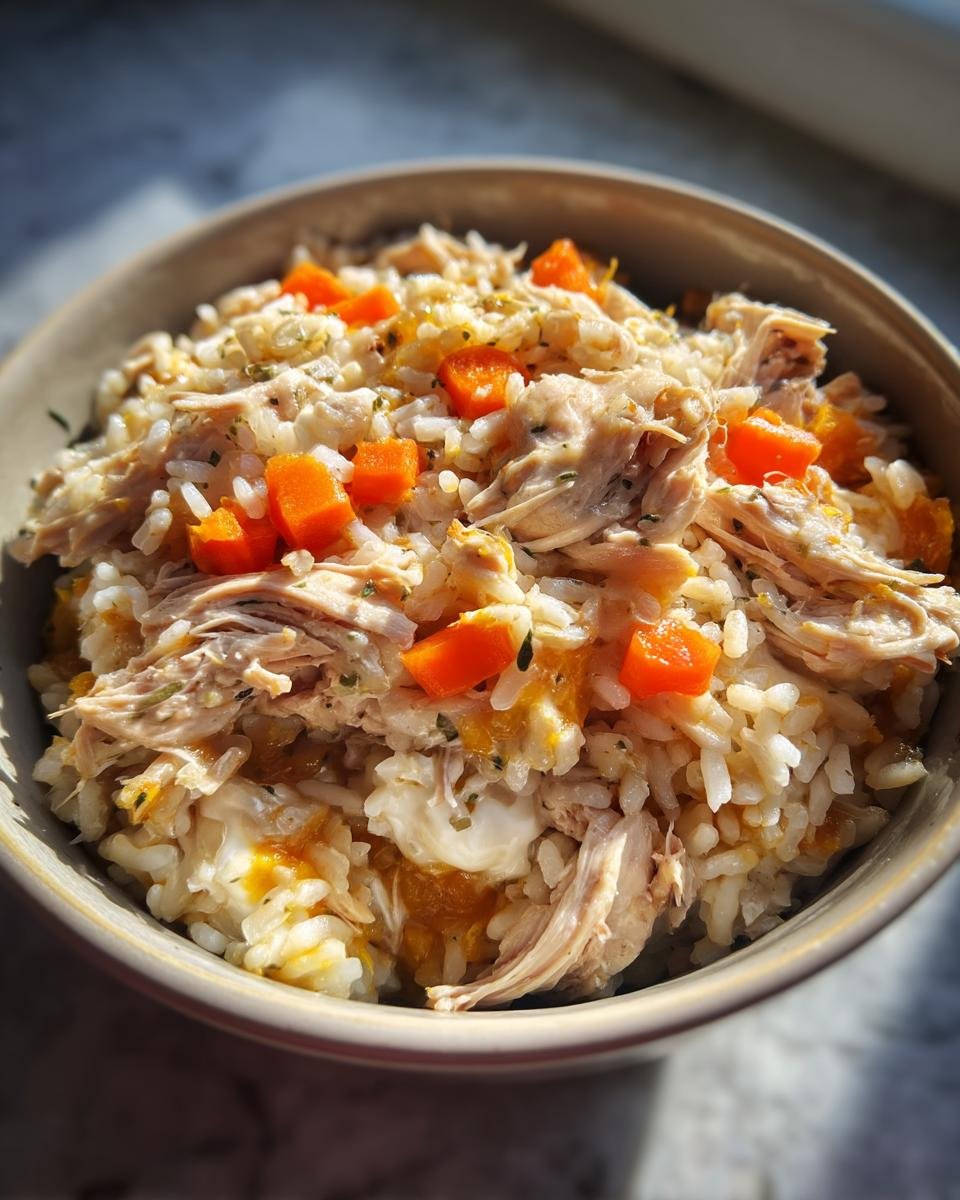
Why You’ll Love This High Protein Puppy Diet
Let me tell you why this recipe became Biscuit’s favorite – and why your pup will lick the bowl clean too! First off, that 25g of protein per serving isn’t just a number. It’s what fuels those crazy park sprints and helps build lean muscle under that soft puppy fur. I watched Biscuit’s wobbly legs transform into proper “big dog” muscles within weeks!
You’re getting restaurant-quality ingredients here without the markup. That shredded chicken breast? Cheaper per pound than premium kibble. The Greek yogurt and pumpkin puree? Nature’s probiotics and fiber boosters that keep tummies happy. Our vet nearly fell over when I showed her the ingredient list – “This is what I recommend, but nobody actually makes it!” she said.
And energy? Oh honey. After switching to this diet, Biscuit went from napping through afternoon playdates to outlasting every pup at the dog park. The combo of slow-burning brown rice and quality proteins keeps their energy levels steady – no more post-meal crashes or 3am zoomies (well, fewer zoomies).
Best part? You control what goes in. No mystery “meat meal” or sketchy preservatives. Just real food that helps your furry baby grow strong while saving you trips to the pet store. Who knew watching them devour healthy food could be this satisfying?
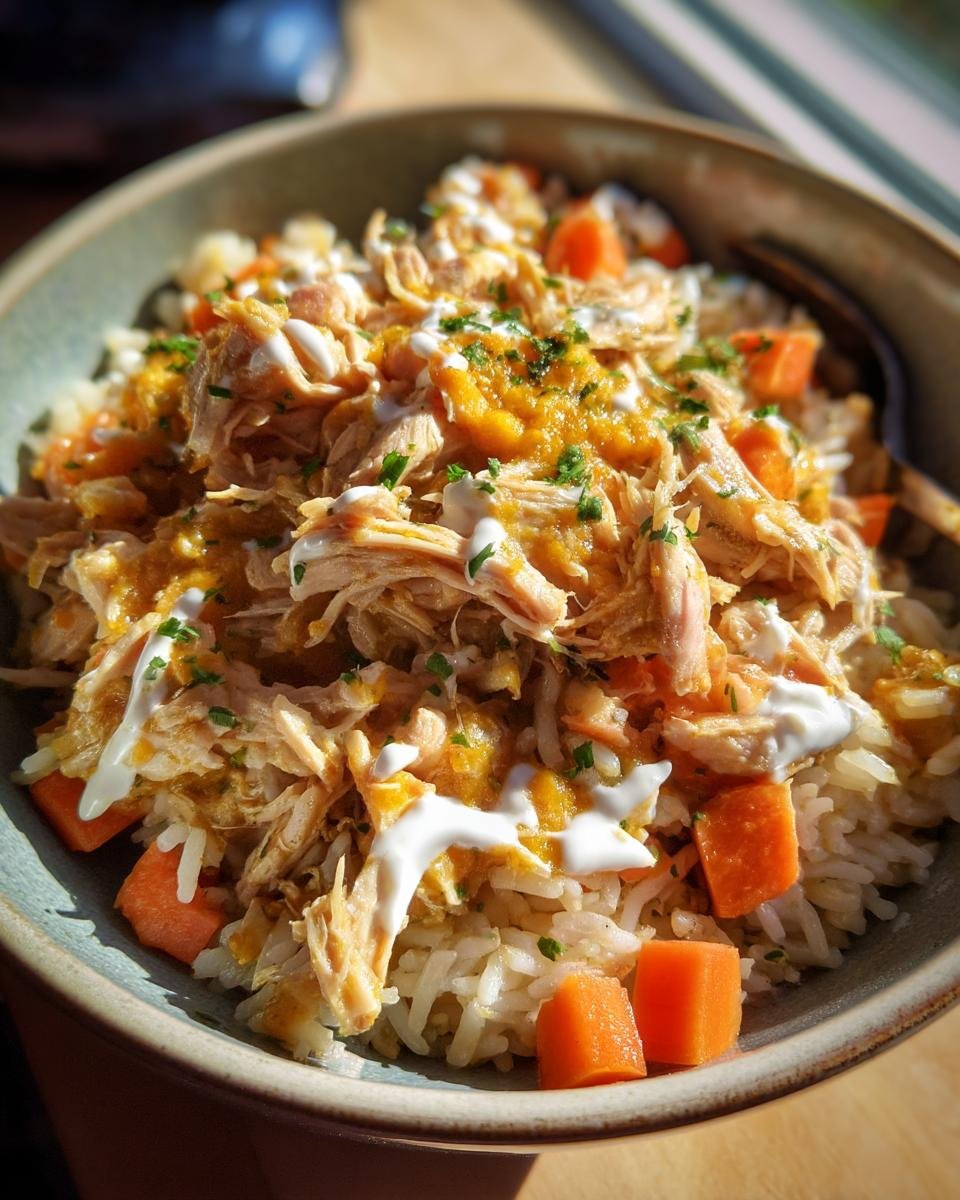
Ingredients for a High Protein Puppy Diet
Let’s dig into the good stuff! Every ingredient here was vet-approved for my Biscuit and carefully measured to support his growth spurts. Pro tip: Use a kitchen scale for accuracy – puppies need precise nutrition, and eyeballing just won’t cut it!
- 1 cup cooked chicken breast (shredded): Hand-shredded, never processed deli meat!
- 1/2 cup cooked brown rice: Not instant – we want those wholesome grains
- 1/4 cup pureed pumpkin: 100% pure – check the label twice!
- 1 hard-boiled egg (chopped): Shell removed, cooled completely
- 2 tbsp plain Greek yogurt: Full-fat for growing babies
- 1 tbsp flaxseed oil: Our secret shiny coat booster
- 1/4 cup steamed carrots (diced): Soft enough to squish with your finger
- 1 tsp calcium supplement: Vet-approved brand only!
Puppy parent alert: Never swap in onions, garlic, or grapes – they’re sneaky toxic! I learned this the hard way when Biscuit tried to steal my stir-fry. Now I keep a “no-no foods” list stuck to my fridge.

Protein Sources for Growing Puppies
Chicken breast isn’t just for bodybuilders – it’s puppy gold! I use free-range when possible because those lean proteins build muscle without unnecessary fat. The shredding matters too – big chunks might intimidate tiny mouths.
Eggs became Biscuit’s favorite after his first taste. They’re nature’s multivitamin! The yolks give that glossy coat, while the whites pack pure protein. Just make sure they’re fully cooked – raw eggs and puppies don’t mix. I hard-boil a dozen every Sunday for quick meal prep.
Essential Carbohydrates and Vegetables
Brown rice is my carb hero – gentle on tummies but keeps energy levels steady. I cook it al dente (yes, like pasta!) so it doesn’t turn mushy when mixed. Pro tip: Rinse it three times to remove excess starch that can cause gassiness.
The pumpkin-carrot combo does double duty. Pumpkin’s fiber prevents both diarrhea and constipation – crucial for growing pups! Carrots add a sweet crunch they love. I steam them until fork-tender, then dice smaller than kibble pieces. Fresh is best, but frozen works in a pinch – just thaw completely first!
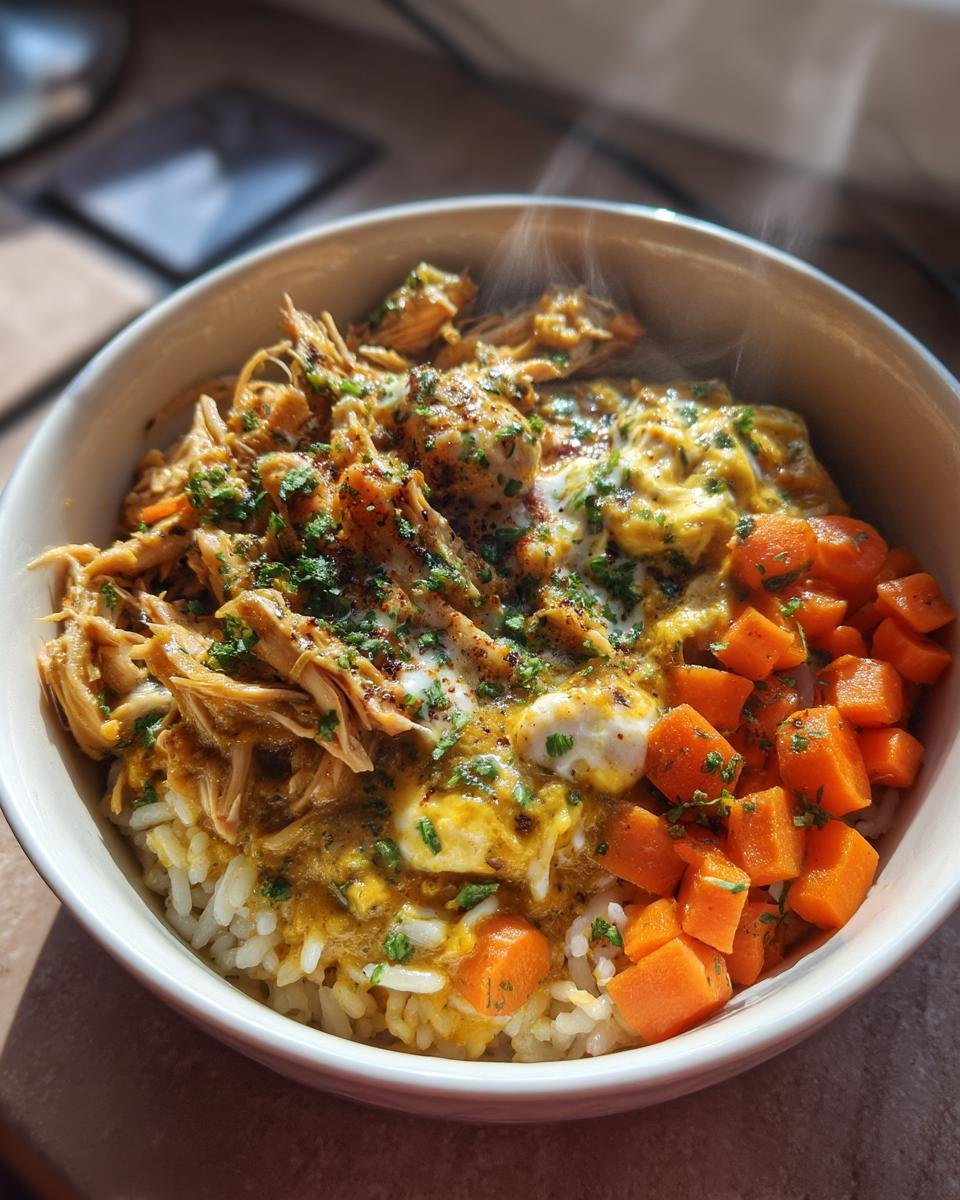
How to Prepare Your High Protein Puppy Diet
Let’s get cooking! I’ve burned enough chicken breasts and messed up enough rice batches to perfect this routine. Now I can whip up Biscuit’s meals while brewing my morning coffee – you’ll get there too!
Preparing the Base Ingredients
Start with the chicken – it’s the star! I bake breasts at 375°F (190°C) for 25 minutes until they hit 165°F internally. No pink juices allowed! Cool 10 minutes before shredding – trust me, burning your fingers slows everything down. Use two forks or (my secret) stand mixer paddle on low – shreds it perfectly in seconds!
For the rice, I use a 2:1 water ratio. Bring to boil, then simmer covered 18 minutes. Fluff with fork and spread on baking sheet to cool. Pro tip: The sheet trick stops soggy rice – crucial texture for picky pups!
Carrots get steamed 8-10 minutes until they squish between thumb and forefinger. I dice them smaller than kibble pieces – no choking hazards here! Let all components reach room temp before mixing. Cold rice clumps less than warm.
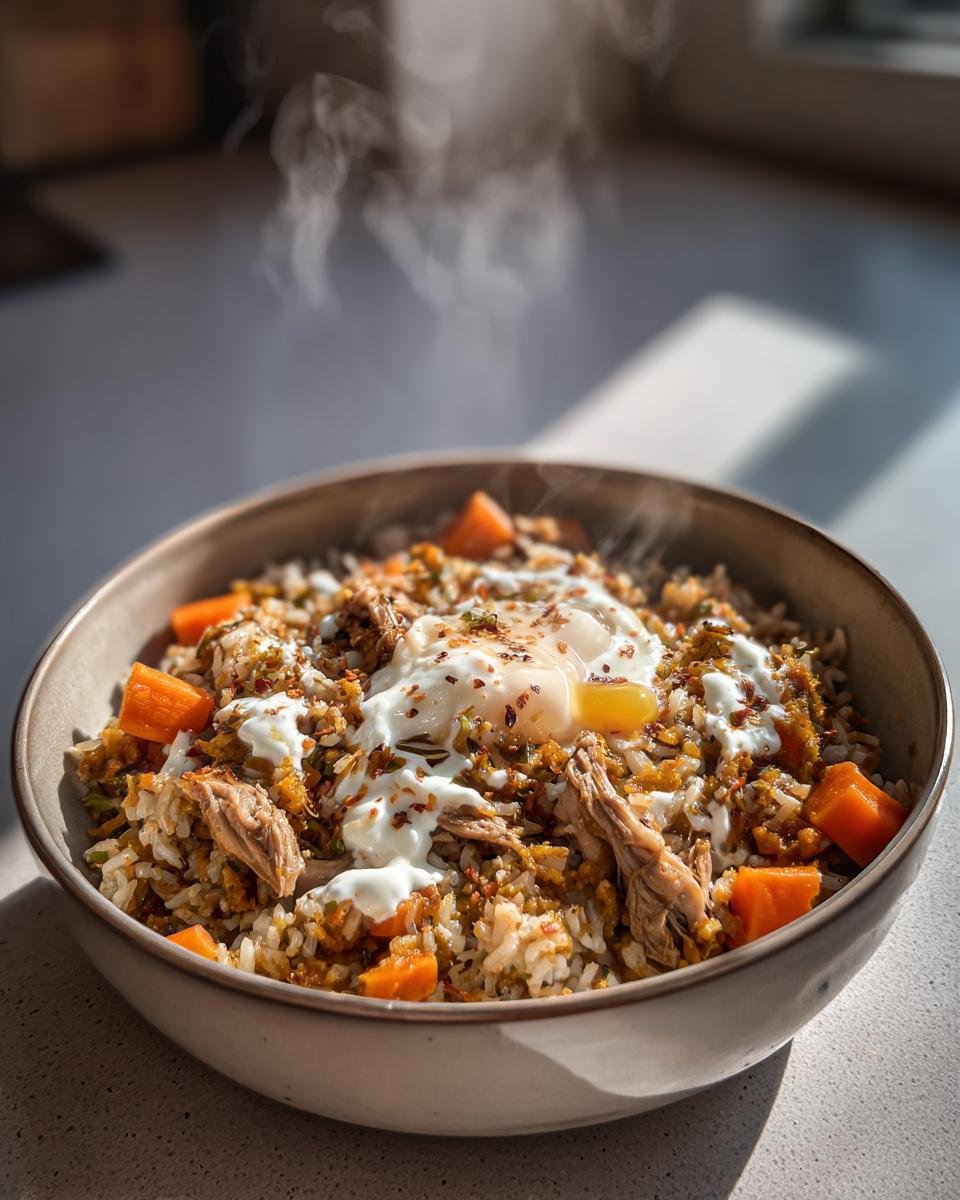
Mixing and Serving
Now the fun part! In my biggest mixing bowl, I layer chicken, rice, pumpkin, and egg. The yogurt and flaxseed oil go in next – mix like you’re folding a soufflé! Gentle but thorough strokes prevent mush. I use a potato masher for stubborn pumpkin clumps.
Puppy parent alert: Never add calcium supplements to warm food! Wait until everything’s cooled to room temp. Hot ingredients can break down the supplement’s effectiveness. I stir mine in last with a silicone spatula.
Portioning’s key – I use a 1-cup measuring scoop for consistency. Biscuit gets 1.5 cups twice daily at 35lbs, but your vet’s advice rules! Store leftovers in glass containers (plastic absorbs smells) and label with dates. Pro tip: Freeze portions in silicone muffin tins for easy single servings!
Always serve at room temp or slightly chilled. I let refrigerated batches sit out 20 minutes – cold food can upset tiny tummies. Watch those tails wag when you present this feast!

Customizing Your High Protein Puppy Diet
Swapping ingredients? Been there! When Biscuit got bored of chicken, my vet suggested lean ground turkey – same protein punch, new flavors! Quinoa works wonders if your pup’s sensitive to rice (just rinse it extra to remove bitterness). Sweet potato’s my go-to when pumpkin’s out of season – bake, mash, and mix!
But listen – some swaps are dangerous. I once panicked when we ran out of carrots and almost grabbed raisins before remembering they’re toxic! Now I keep a “NO” list on my fridge: onions, garlic, grapes, macadamia nuts. When in doubt, Google it mid-recipe – your pup’s health is worth the pause!
Pro tip: Introduce one new ingredient every 3 days. That way, if tummy trouble hits, you’ll know the culprit. Always snap a pic of your creation and text your vet – mine loves seeing Biscuit’s gourmet meals!
Storing and Reheating High Protein Puppy Meals
Let me tell you about the time I left Biscuit’s chicken-and-rice mix on the counter “just for a minute” – three hours later, it smelled like a science experiment gone wrong! Now I’m obsessive about proper storage. Here’s how to keep those precious puppy meals fresh and safe.
Airtight containers are non-negotiable. I use glass Lock & Lock ones – plastic absorbs smells no matter how well you wash. Portion meals immediately after mixing. Biscuit’s weekly batch gets divided between 4 containers: 3 for the fridge, 1 for freezing. Write dates in Sharpie right on the lid – puppy brain fog is real!
Your fridge’s coldest shelf holds meals for 3 days max. I set phone reminders for Day 3 – that’s when the carrots start looking sad. Frozen portions? They’re lifesavers when work runs late! Freeze flat in silicone muffin tins (each “muffin” = 1/2 cup), then pop into freezer bags. Thaw overnight in the fridge – never countertop. Microwaving creates hot spots that could burn tender mouths!
Here’s my reheating hack: Place the refrigerated portion in a sealed bag and dunk it in warm water for 5 minutes. Stir well and do the “cold nose test” – if it’s comfortable against your inner wrist, it’s pup-approved. Toss any leftovers after 30 minutes – bacteria grows faster than a Great Dane puppy!
Pro tip from our vet: Label everything “PUPPY” in big letters. My husband once nearly added flaxseed-oil chicken to his stir-fry! Now we keep Biscuit’s meals on a dedicated fridge shelf with a paw-print magnet. Your future self will thank you during midnight potty breaks!
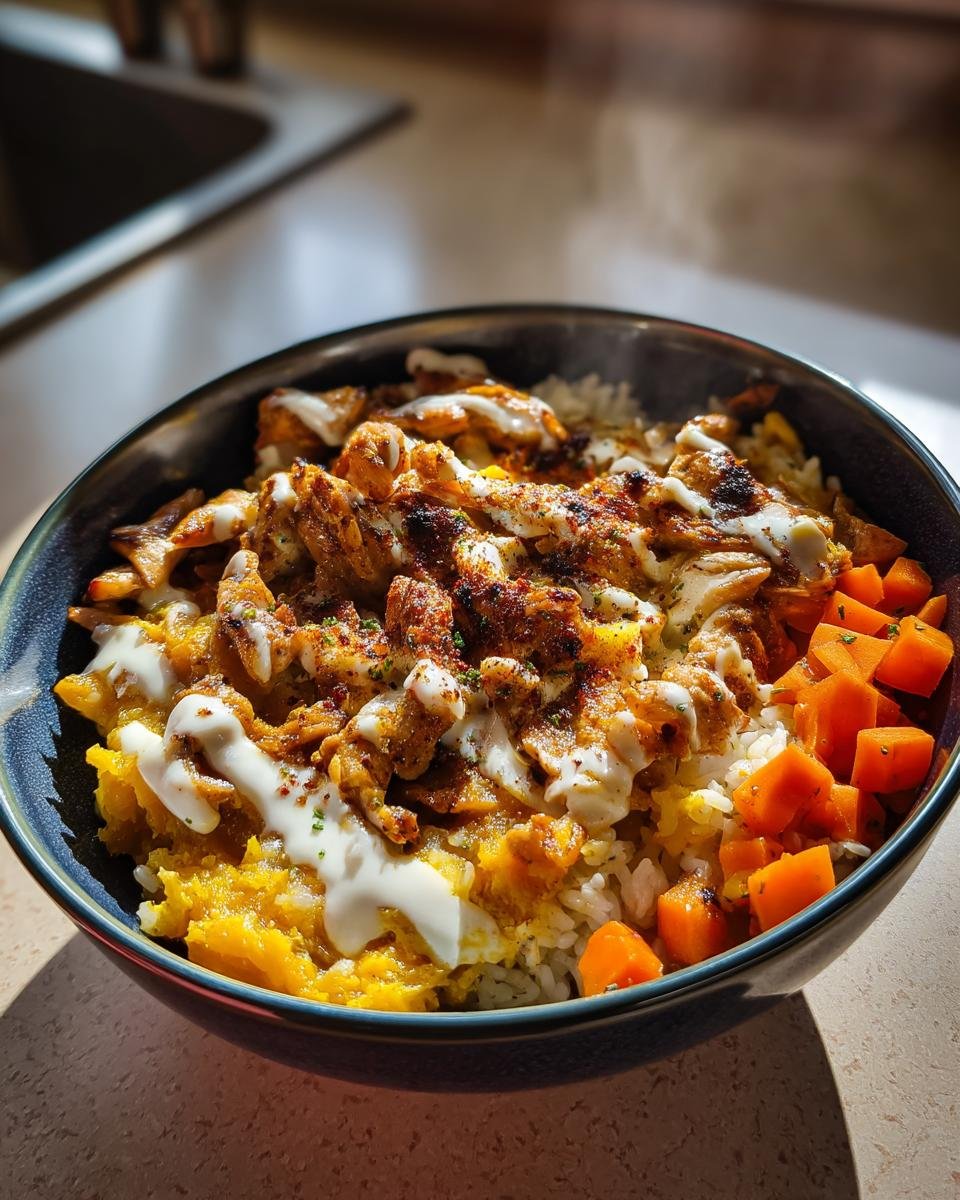
Nutritional Information for Puppy Meals
Let’s get real about numbers for a second – I nearly drove myself nuts calculating protein ratios when I first started making Biscuit’s meals! Here’s what I learned: those nutrition labels on kibble bags? They’re averages. With homemade food, your chicken’s fat content or pumpkin’s moisture level can shift values daily. The 25g protein per serving I list? Consider it a ballpark figure that makes my golden retriever thrive.
Our vet showed me how brand differences matter. That flaxseed oil from the health food store versus the grocery chain? Different omega-3 levels. The chicken breast I roasted versus poached? Slightly varied moisture content changes calorie density. This recipe’s magic lies in its balance, not laboratory precision.
Here’s my golden rule: This chart is a starting point, not gospel. Biscuit’s 320-calorie portion keeps him lean at 35lbs, but your Bernese Mountain puppy needs might double that! Always – and I mean always – run your specific recipe past your vet. Mine tweaked our calcium supplement twice during growth spurts. Pro tip: Snap a photo of your prepared meal with a quarter for scale – vets love visual references!
Warning to puppy parents: Online calorie calculators lie more than a terrier with a stolen sock! I once panicked when a random site claimed our recipe was “too high protein” – turns out it was perfect for Biscuit’s activity level. Your vet knows your pup’s bloodwork, bone structure, and energy needs. Keep their number on speed dial, not some generic nutrition chart!
High Protein Puppy Diet FAQs
Let’s tackle those burning questions I wish I’d asked when starting Biscuit’s homemade meals! These are the late-night Google searches every puppy parent faces – consider this your cheat sheet.
How does a high protein diet benefit puppies?
Protein’s the building block for those wiggly bodies! It fuels muscle growth during growth spurts – crucial for large breeds like our Lab friends. But it’s not just bulk! Protein supports brain development too. I noticed Biscuit learned “sit” faster once we switched diets. The shiny coat from omega-3s? Bonus points at the groomer!
Can I substitute salmon for chicken in this recipe?
Absolutely – salmon’s a fantastic alternative! I rotate proteins to keep Biscuit excited about mealtime. Just make sure it’s cooked through (no sushi-grade raw business) and flaked into bite-sized pieces. Watch for bones like a hawk! Pro tip: Canned salmon in water works great for puppy meal prep – just drain and check for sneaky vertebrae.
How much should I feed my 4-month-old Labrador?
Oh, growing giants! Labs need about 1 cup per 10lbs of body weight daily, split into 3-4 meals. But here’s the catch – my neighbor’s Lab needed 50% more than Biscuit at that age! Activity level matters. Start with 1.5 cups three times daily, then adjust based on those puppy eyes begging for seconds (or leaving crumbs). Always double-check with your vet – they’ll factor in paw size and parent sanity!
Is Greek yogurt safe for puppies with sensitive stomachs?
Usually yes – but start slow! The probiotics can work magic, but introduce a teaspoon-sized portion first. If your pup’s tummy gurgles like mine did after chili night, try lactose-free yogurt. Full-fat works best – low-fat versions can be harder to digest. Skip flavored kinds entirely. Biscuit’s trick? Mix yogurt with pumpkin puree to ease the transition!
When can I introduce this diet to my new puppy?
Patience, puppy parent! Most vets recommend waiting until 8 weeks old. I started Biscuit at 10 weeks with a 25% homemade/75% kibble mix over 7 days. Watch for loose stools – if they happen, slow the transition. Pro tip: Snap a poop pic for your vet (yes, really). Texture changes help them adjust the recipe faster than describing “kinda mushy but not diarrhea!”
Share Your Puppy’s Progress
Nothing makes my day like seeing your fur babies dive into their meals! When Biscuit licked his bowl clean for the first time, I nearly cried – then immediately spammed my entire camera roll to our vet. Now I want to celebrate YOUR puppy’s foodie moments! Snap those messy carrot-covered muzzles, record the happy tail wags when you bring out their bowl, or capture the dramatic “more please” stares. Bonus points for slow-mo videos of rice flying everywhere!
Tag me @HealthyPawsKitchen on Instagram or TikTok with #PuppyPlateProgress – I repost my favorites every Friday! Your photos help other nervous puppy parents see real results. Plus, we’re building the cutest community of well-fed pups this side of the internet. Pro tip: Get down to their eye level for photos! Those upward shots of floppy ears and food-speckled noses? Absolute gold.
P.S. – If your pup turns into a picky critic (we’ve all been there!), share that too! Our community loves troubleshooting together. Last month, we helped a Frenchie named Gizmo finally enjoy his veggies by arranging them in a smiley face. Can’t wait to see what creative solutions YOU dream up!
Print
High Protein Puppy Diet: 25% Protein Secret for Thriving Pups
- Total Time: 35 minutes
- Yield: 4 servings 1x
- Diet: Gluten Free
Description
A balanced high-protein diet for growing puppies, supporting muscle development and energy needs with wholesome ingredients.
Ingredients
- 1 cup cooked chicken breast (shredded)
- 1/2 cup cooked brown rice
- 1/4 cup pureed pumpkin
- 1 hard-boiled egg (chopped)
- 2 tbsp plain Greek yogurt
- 1 tbsp flaxseed oil
- 1/4 cup steamed carrots (diced)
- 1 tsp calcium supplement (vet-approved)
Instructions
- Cook chicken breast thoroughly and shred into small pieces.
- Prepare brown rice according to package instructions.
- Mix shredded chicken, rice, pumpkin puree, and chopped egg in a bowl.
- Stir in Greek yogurt and flaxseed oil until combined.
- Add steamed carrots and calcium supplement, mixing well.
- Divide into portion-sized meals based on your puppy’s weight.
- Serve immediately or refrigerate for up to 3 days.
Notes
- Always check with your vet before changing your puppy’s diet
- Adjust portions based on breed size and activity level
- Avoid onions, garlic, and grapes in all puppy meals
- Freeze leftovers in airtight containers for up to 1 month
- Prep Time: 15 minutes
- Cook Time: 20 minutes
- Category: Dog Food
- Method: Cooking
- Cuisine: Pet Food
Nutrition
- Serving Size: 1 cup
- Calories: 320
- Sugar: 3g
- Sodium: 85mg
- Fat: 12g
- Saturated Fat: 2.5g
- Unsaturated Fat: 8g
- Trans Fat: 0g
- Carbohydrates: 22g
- Fiber: 4g
- Protein: 25g
- Cholesterol: 110mg

